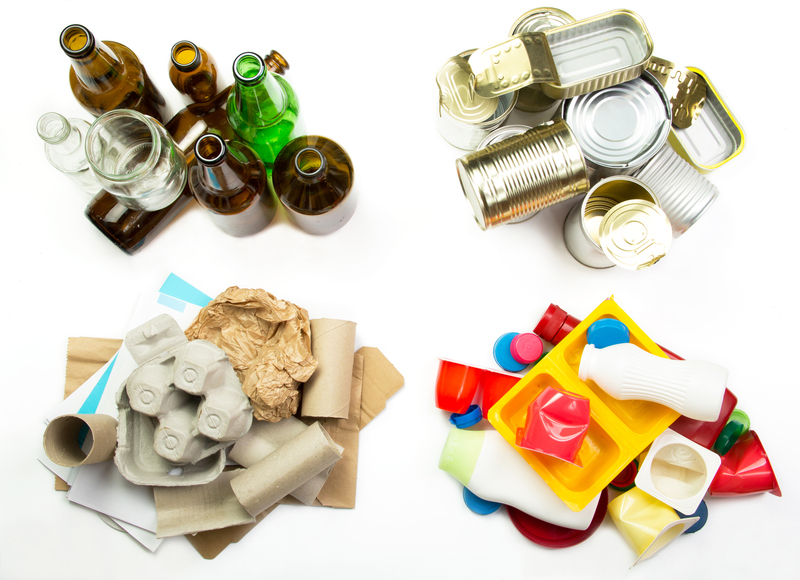Step-by-Step Guide for Responsible PPE Waste Disposal
The rise of global health concerns, especially during and after pandemics, has made proper PPE waste management more critical than ever. Personal Protective Equipment (PPE) such as masks, gloves, gowns, and face shields play an essential role in infection control. However, PPE waste is also a growing environmental and public health issue when it is not disposed of responsibly. This comprehensive, SEO-optimized guide provides step-by-step instructions for safe PPE waste disposal, actionable tips, and best practices for individuals, businesses, and communities.
Why Responsible PPE Waste Disposal Matters
The impact of improper PPE disposal goes far beyond clutter. It can:
- Spread infection: Used PPE may carry viruses or bacteria, putting waste handlers and the public at risk.
- Pollute the environment: Most PPE is made of plastics that don't biodegrade, causing land and water pollution.
- Threaten wildlife: Animals can ingest or become entangled in discarded masks or gloves.
- Clog waste management systems: Improperly disposed PPE can block sewage systems or contaminate recycling streams.

Types of PPE Waste
Before diving into the disposal process, it's crucial to know what constitutes PPE waste. Common items include:
- Masks (surgical, N95, cloth)
- Latex, nitrile, or vinyl gloves
- Face shields and goggles
- Protective gowns and suits
- Hairnets and shoe covers
The Step-by-Step Guide for Responsible PPE Waste Disposal
Adhering to these steps can help minimize risks and promote environmental responsibility.
1. Preparation: Setting Up PPE Waste Collection
- Designate a PPE waste bin: Place a clearly labeled, lined bin in areas where PPE is used, such as entrances, workspaces, or bathrooms. Avoid mixing PPE waste with recyclables or general trash.
- Choose the right container: Use containers with lids to contain potential contaminants and reduce the risk of exposure. For medical or suspected infectious waste, use a foot-operated, color-coded bin (typically yellow or red).
- Post disposal instructions: Display step-by-step disposal guidelines near bins. Use graphics to demonstrate proper removal and bin use.
2. Safe Removal of PPE
- Wash or sanitize hands: Before removing any PPE, clean your hands thoroughly to reduce the transfer of germs.
- Remove PPE carefully: Avoid touching the front or outer surface of masks and gloves. For masks, handle only by the ear loops or ties. For gloves, peel them from the wrist and turn them inside out as you remove.
- Dispose immediately: Place used PPE directly into the lined waste bin without tossing, shaking, or compressing items.
Avoid reusing single-use PPE--even if it appears clean.
3. Handling PPE Waste Bins
- Seal bags when two-thirds full: Don't overfill the bin. When it's about two-thirds full, seal the liner securely by knotting or tying it.
- Double bag for safety: For suspected contaminated or medical waste, place the sealed bag inside another bag to further minimize the risk of leaks or exposure.
- Sanitize the bin: Regularly clean and disinfect the bin surfaces and handles using approved disinfectants.
4. PPE Waste Segregation
Proper segregation prevents cross-contamination and supports correct downstream disposal or treatment. Separate:
- Infectious PPE waste: Used by known or suspected patients or used in healthcare settings. Mark these bags with biohazard labels if available.
- General/non-infectious PPE waste: Routine masks and gloves from everyday use. These can go in general landfill bins where medical waste disposal is not required.
- Reusable PPE: Fabric masks or goggles should be placed in a separate bin for laundering or appropriate cleaning.
5. Disposing of PPE Waste Responsibly
- Follow local guidelines: Each municipality may have different protocols for PPE waste disposal. Check your city or county website for instructions.
- Utilize hazardous waste services: Many communities offer special drop-off points or hazardous waste collection days for PPE and similar waste.
- Do not recycle single-use PPE: Masks and gloves should not be placed in standard recycling streams--they tangle machinery and contaminate recyclable materials.
- Medical facilities: Hospitals and clinics should use authorized medical waste disposal contractors to ensure regulatory compliance.
6. Special Considerations for Large Quantities
- Commercial generators: Workplaces, manufacturing sites, or healthcare facilities producing large amounts of PPE waste must comply with occupational health and safety regulations and environmental laws.
- Onsite storage: Store bulk PPE waste in clearly marked, restricted access areas until collection.
- Document disposal: Maintain records of collection and disposal to meet audit, safety, and environmental standards.
Best Practices for Sustainable PPE Waste Management
Although safe disposal is essential, it's equally important to reduce PPE waste generation and seek more eco-friendly options whenever possible.
Reducing PPE Waste at Source
- Adopt reusable PPE: Where safe and feasible, switch to washable cloth masks, gowns, or face shields.
- Educate staff and public: Run campaigns emphasizing responsible use, correct donning/doffing, and proper disposal.
- Right-size orders: Order PPE quantities based on demand forecasts to prevent overstocking and excess waste.
Eco-Friendly Alternatives and Innovations
As awareness of PPE waste pollution increases, manufacturers are developing more sustainable options:
- Biodegradable masks and gloves: Made from plant-based or compostable materials, these options break down faster in the environment.
- Recyclable PPE: Some companies accept used masks and gloves for specialized recycling (do not place in curbside recycling).
Legal and Regulatory Considerations
In many regions, PPE waste is regulated under environmental, health, and safety laws. Non-compliance can result in penalties, public health risks, and environmental damage. Key considerations include:
- OSHA guidelines: In the United States, workplaces must follow Occupational Safety and Health Administration directives for infectious waste disposal.
- State/local ordinances: Municipalities may have specific bag colors, labeling requirements, or collection schedules for PPE waste.
- Healthcare compliance: Medical facilities must comply with stricter rules for segregation, storage, transport, and destruction of PPE contaminated with blood or potentially infectious substances.
Educating & Protecting Your Community
A single improperly discarded mask can have ripple effects. Community-wide education fosters responsible PPE waste disposal habits. Here's how you can help:
- Share posters and guides: Place visual aids and disposal instructions in high-traffic areas.
- Organize awareness workshops: Demonstrate safe PPE removal, handling, and disposal techniques.
- Report illegal dumping: Notify local authorities of discarded PPE found in public spaces.
- Lead by example: Model proper PPE disposal and encourage others to do the same.

Frequently Asked Questions (FAQ) on PPE Waste Disposal
Q1: Can I recycle disposable masks and gloves?
No: Disposable masks and gloves cannot be recycled in your household blue bin. They can jam recycling machinery or contaminate the recycling stream. Proper PPE waste disposal means they should always be placed in regular trash or a dedicated PPE bin.
Q2: What should I do with a reusable mask at the end of its life?
If your cloth mask is worn out, cut the straps/ear loops to prevent wildlife entanglement, and dispose of it with household garbage unless textile recycling is available in your area.
Q3: Are there companies or programs that recycle used PPE?
Some specialized programs and companies now process used PPE for recycling, particularly from large workplaces. These are not typical in residential settings, so check with local authorities or visit program websites for specific drop-off or mail-in guidelines.
Q4: What PPE can be safely composted?
Only masks and gloves specifically labeled as compostable or biodegradable can go in compost. Always follow the manufacturer's guidelines and dispose in a commercial compost facility when possible, as home compost heaps may not break down these products fully.
Conclusion: Your Role in Responsible PPE Waste Disposal
With billions of pieces of PPE used worldwide each month, responsible PPE waste disposal is everyone's duty. By following the step-by-step guide above, staying informed, and advocating for best practices, you can protect yourself, your neighbors, and the planet.
Take action today by setting up proper PPE waste bins, following safe handling techniques, educating others, and advocating for sustainable options in your community. Together, we can manage PPE waste effectively and safely for a healthier future.
Further Resources
- WHO Guidelines on COVID-19 Waste Management
- CDC PPE Guidance for the Public and Healthcare Settings
- EPA: How to Safely Dispose of PPE
For any specific questions about safe PPE waste disposal in your area, always consult your local public health and sanitation authorities.